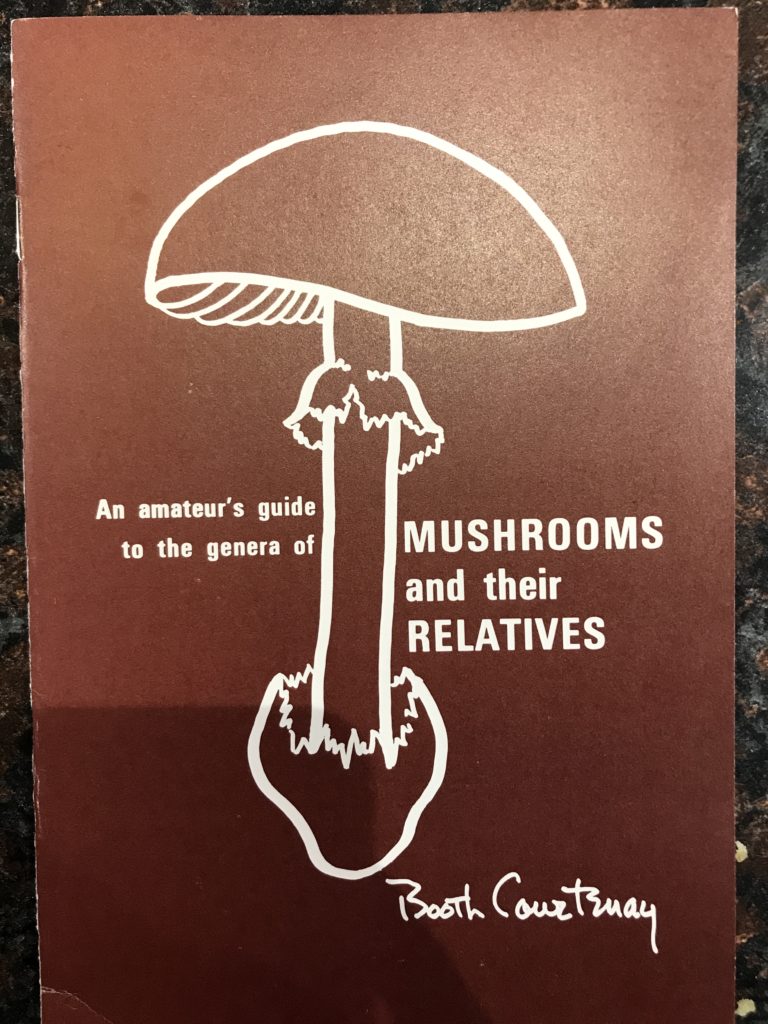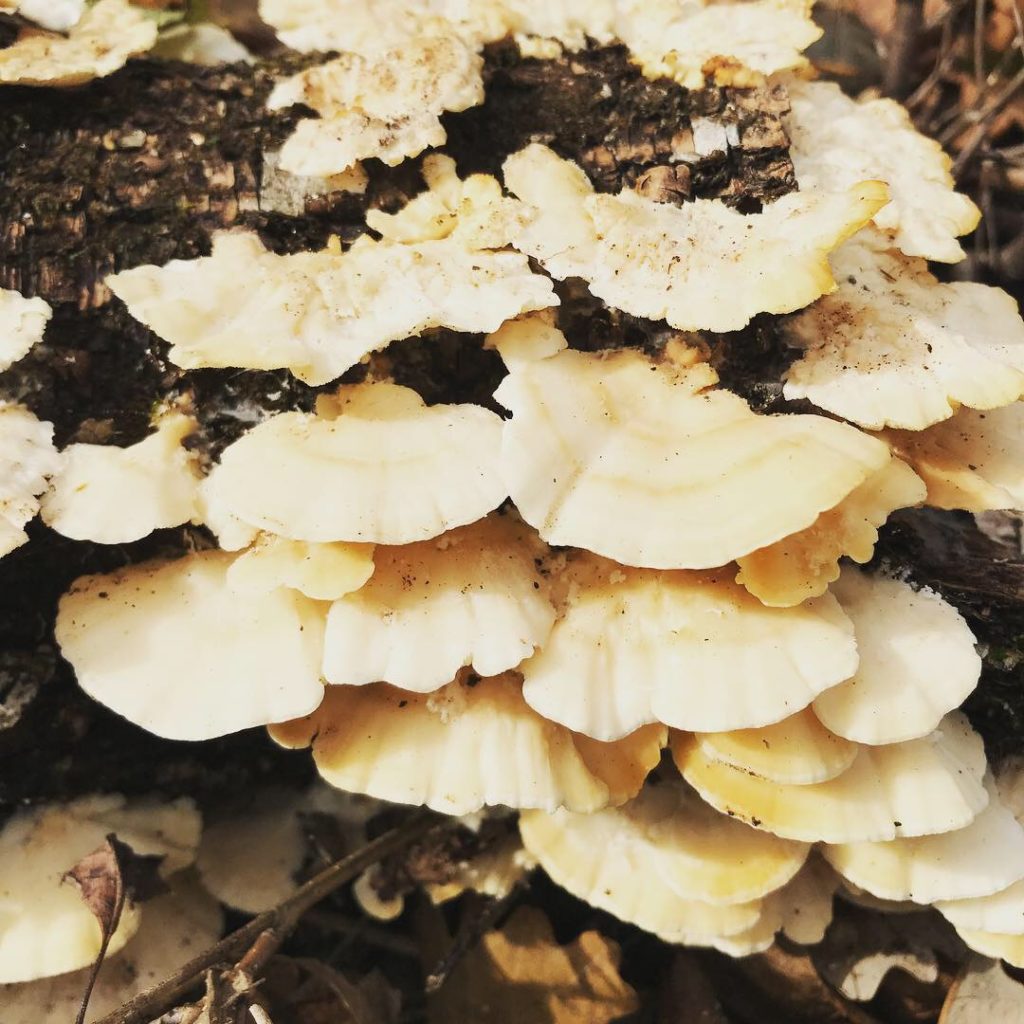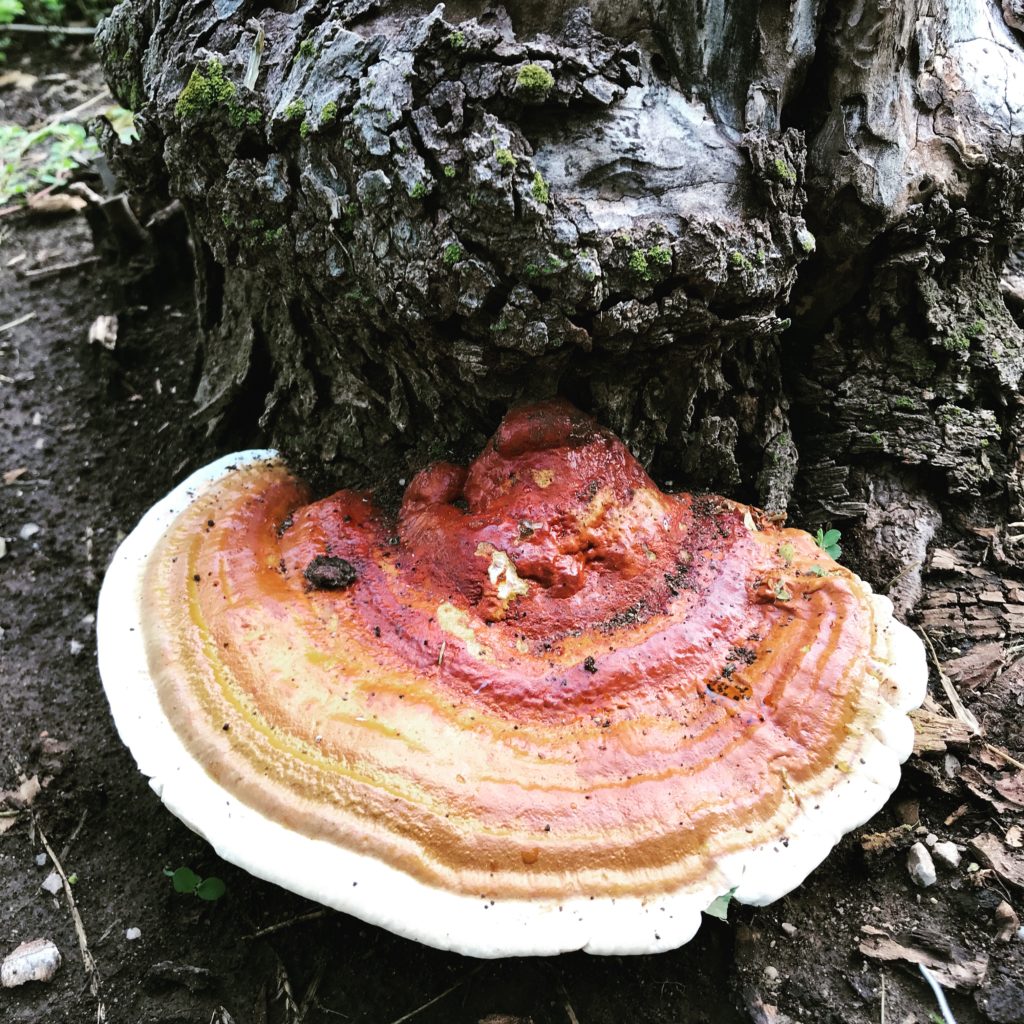Working on the Arboretum grounds means I have the joy of interacting with native plants and animals every day. I get to watch newly-planted trees sprout their first leaves and newly hatched goslings sprout their first feathers. I see migratory birds on their way north and south, caterpillars turning into butterflies, spiders wrapping up their breakfast of grasshoppers, and the cozy tunnels made by fastidious skunks and armadillos. But by and large my favorite living thing to observe here at the Arboretum is fungus.
That’s right – that crusty yet slimy, multicolored, spore-producing stuff that grows quietly all around us.

Fungi is a much misunderstood life form (and no, I am not just talking about my coworkers Brad and Scott, fun guys though they are!). While people often come to visit Dyck Arboretum to watch birds or spot their favorite wildflowers, I have yet to hear anyone shout in delight, “Guys, look over here! A stinkhorn mushroom colony!” And such a shame – I have seen so many weird and wonderful fungus (and fungus-like) creatures at the Arb that I can’t help but be enthralled by them.

In our Prairie Window Project the dense mat of grasses and plant debris create a rich environment for fungus. These tiny mushrooms, only the size of dimes, were scattered throughout a ten-foot square area.
Plant or Animal?
Perhaps you noticed I used the word ‘creature’ for fungi in the above paragraph. Aren’t mushrooms just strange, fleshy plants? No. Technically speaking, a fungus is genetically more similar to you and me than it is to a plant. In scientific nomenclature, fungi occupy their own Kingdom (there are 6 major Kingdoms of life, for animals, plants, bacteria and so on). Fungi do not photosynthesize like plants, and cannot make their own food (autotrophy). Like us, they must feed on other organisms to survive (heterotrophy). Fungus do not have roots, stems or leaves, and do not store energy as a starch like plants do. They reproduce by releasing spores into the environment, or by simply breaking apart (fragmentation) or budding (growing a clone).

What am I Looking At?
The first step into nerding out over fungus is to classify your observations. It is a tricky job, and scientists today are still in a tizzy about the genetic ancestry of fungus. For the layperson, let’s stick to the basics: yeasts, molds, and mushrooms are all types of fungus. Mushrooms are perhaps the most charismatic and well known fungi – shelf-like, gelatinous, or toadstool shaped, they spring up seemingly overnight. What we see as a ‘mushroom’ is only a small part of the organism, just the fungus’s reproductive organ. The rest of it exists as a massive web of string-like hyphae in the soil or decomposing wood.
There are several trees around the Arboretum in various states of natural decay sporting impressive shelf fungi. (Or perhaps they are spore-ting it?) But don’t be fooled – lichen, commonly found growing on trunks and tree branches, is NOT fungus. It is actually a combination-creature; algae, cyanobacteria, and fungus all sharing a body to create a new being, with an endless array of forms.

Where to Look
People may assume Kansas is not a good place to find fungus – much too dry and hot. Not only do we have some delicious edible mushrooms growing wild in Kansas but a plethora of other fun-to-hunt (but potentially toxic!) fungus. In fact, they grow almost everywhere on the planet and have countless forms, colors, and methods of life. Scientists only know of 120,000 species, but estimate there are millions more waiting to be discovered.
To find your first fungus, search around decaying wood piles or heavily mulched garden beds. Check carefully and often around tree stumps; different mushrooms will feed on the rotting roots at different stages of the decay.

On your next visit to Dyck Arboretum, be sure to get a peek at some magnificent fungi on our grounds. Hunting for fungus, in all its forms, is a meaningful way to interact with nature and build a relationship of wonder and respect for the land we live on.
